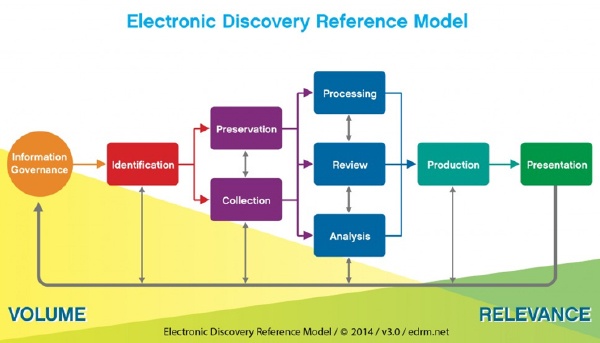
Most organizations are well aware of the productivity and competitive advantages derived from optimizing fundamental information processes.
In a previous post, “Optimizing Information Processes Helps Control eDiscovery Costs”, I discussed how eDiscovery costs can account for up to 90 percent of the total litigation cost. And according to a global survey from AIIM Industry Watch , there is plenty of room for improvement:
- 53 percent of respondents agree their legal discovery procedures are “ad hoc, manual, disruptive and expensive.”
- 74 percent rely on manual processes to manage the downstream legal discovery process.
- 28 percent have no policy, process or precedent for legal discovery and legal hold at all.
- 47 percent admit that their email retention and hold policies expose them to risk.
Capturing and digitizing information sooner, automating workflows and broader adoption of Smart Process Applications (SPAs) can improve customer service, reduce time-to-market and increase flexibility to meet changing market—and workforce—requirements.
But with the complexity and sheer amount of litigation facing most corporations, it’s becoming clear that process optimization can significantly mitigate ever-rising discovery costs.
Technology and Good Information Governance
The Electronic Discovery Reference Model (EDRM) diagram, a framework used by many legal professionals to determine processes and expectations, was created in 2005 and has been in use ever since. The most recent version, modified in 2014, was changed in order to emphasize the critical role of information governance to good eDiscovery. This includes optimized, foundational information processes.
Source: http://www.edrm.net/archives/23174
It is critical in the early stages of eDiscovery to have a comprehensive and clear picture of where potentially relevant Electronically Stored Information (ESI) may reside. At the outset, the data has to be identified, collected and prepared for search and review, a process that may include scanning documents. Technology is a critical and valuable tool.
Yet as we have learned through years of providing business process services to global organizations, technology is only part o
f the solution.
Optimization of information processes requires you take a close look at the way information flows through your organization. For technology to be successfully applied, it must align with your business processes and today’s changing workstyles, like accessing corporate information from mobile platforms or working from home. The criticality of email in litigation is a good example of how a technology needs to be aligned with strong business processes and practices, such as dual-factor authentication and acceptable use policies, for stronger information governance.
Optimizing your business processes through digitization and automation can help you identify critical information quickly and efficiently, helping control eDiscovery costs and boosting productivity. This is particularly important if you are working with databases distributed across geographies and departments, diverse applications, different languages or multiple formats. The more rationalized and integrated your foundational processes are to begin with, the stronger your information governance framework will be—making for more effective and efficient eDiscovery.
In Summation
 Litigation and eDiscovery costs may be rising, but there are opportunities for your organization to minimize costs. In order to help you optimize processes and achieve stronger information governance, consider partnering with an experienced business services provider. Their knowledge and experience across departments, industries and geographies can help you redesign workflows, improve your digitization efforts and avoid known pitfalls.
Litigation and eDiscovery costs may be rising, but there are opportunities for your organization to minimize costs. In order to help you optimize processes and achieve stronger information governance, consider partnering with an experienced business services provider. Their knowledge and experience across departments, industries and geographies can help you redesign workflows, improve your digitization efforts and avoid known pitfalls.
The right partner can also provide the benefits of state-of-the-art technology without the capital investment, allowing you to scale on-demand to meet changing requirements. And assistance coming from outside the organization can, in many cases, help you overcome organizational resistance to change. In all, the benefits of process optimization extend far beyond the realm of eDiscovery.
Tags: Blog


